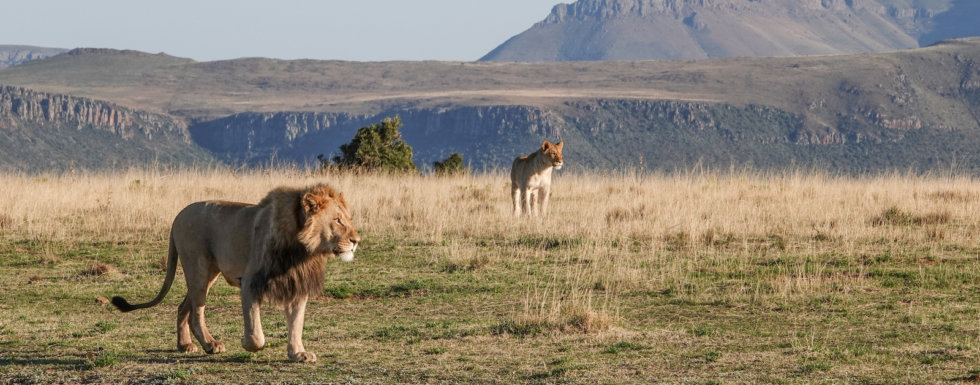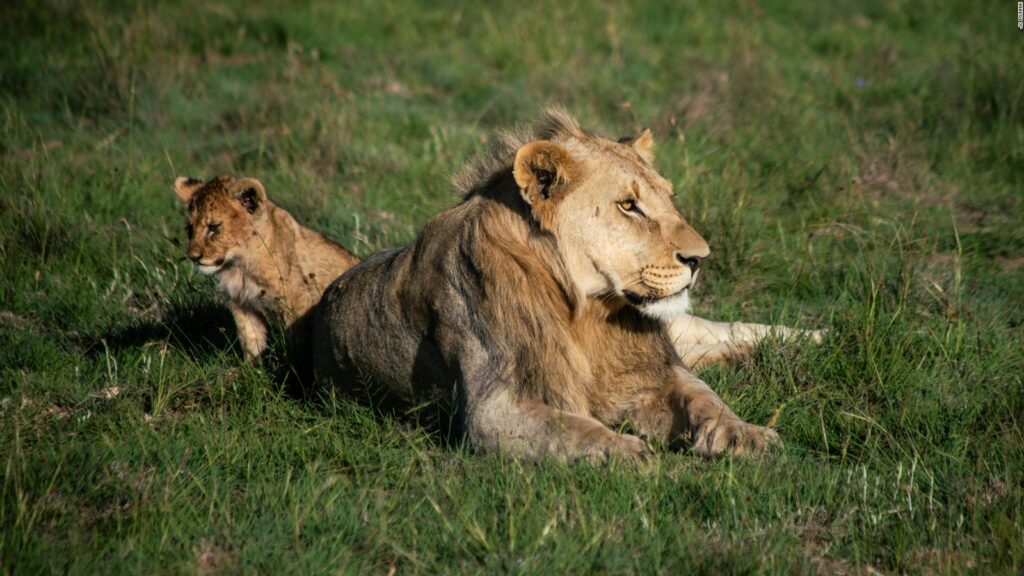In the Great Karoo, a vast semi-arid expanse in South Africa, lions and cheetahs once roamed. But then came farms and fences and guns. By the 1840s lions were gone; then by the 1870s, cheetahs too.
Much of what is now the Samara Private Game Reserve, in the Eastern Cape, became home to livestock. That was until 1997, when nature was once again allowed to take its course over thousands of acres of land. Now, after 25 years of carefully managed rewilding, both cheetahs and lions have not only returned to this part of South Africa — they’re thriving.
The successful reintroduction of these big cats is down to the vision of Mark and Sarah Tompkins.
The couple purchased 11 farms totaling 27,000 hectares (67,000 acres) over five years for the purpose of returning the land to its former glory. “It wasn’t a wild area,” explains Isabelle Tompkins, their eldest daughter and business development manager at Samara. “All of the migrating animals were essentially shut out, and of course the predators (that) would accompany them.
“To dream big, the family had to start small. That meant looking at what was beneath their feet. When the land was bought, much of it was overgrazed, with barren patches and gullies eroded in the earth. Fences were removed along with the livestock, and the rewilding effort began literally at grassroots level.
“Despite being a semi-arid region, there’s a remarkable amount of biodiversity, particularly endemic plants,” says Isabelle, adding that five of South Africa’s nine types of plant habitat exist within Samara.
Over time, the region’s flora returned. Forest and grasslands, rivers and streams, mountains and valleys span the reserve, providing habitats and grazing for herbivores (around 20 antelope species live in the reserve today) and megaherbivores such as elephants. “Little by little, we’ve introduced the pieces of the puzzle of what this ecosystem would have looked like,” says Isabelle.
With plentiful prey, predators could be reintroduced. In 2003, cheetahs were brought back to the area for the first time in 130 years. Of the first three individuals, female Sibella became a symbol of Samara and its success. At the age of two she suffered a savage attack by hunting dogs and humans, and was brought to Samara after life-saving surgery and rehabilitation. At her new home she would give birth to 20 cubs and raise all but one to adulthood, before dying of natural causes in 2015.
Some 50 cubs have been born at the reserve, and Samara’s population has become substantial enough that many are translocated to other reserves and national parks through the Endangered Wildlife Trust’s Cheetah Metapopulation Project. Other cheetahs are brought to Samara in return, all in an effort to boost genetic diversity.

Return of the king
Once cheetah territories were firmly established, the climate was right to bring back lions — a momentous step for both Samara and the area of the Great Karoo.
Male Titus and female Sikelele were introduced in January 2019, and female Sheba followed soon after. Two years later and Sikelele has given birth to two litters, Sheba one, with the reserve’s first litter now occasionally hunting on their own, say the Tompkins.
“Lions being the apex predator, they were always going to have a big impact,” Tompkins says.
Returning lions to the land has changed the dynamic of Samara. There are now more carcases for jackals to scavenge on, meaning less predation of springboks, resulting in an uptick in their population. On the other hand, black wildebeest are producing more young, say the Tompkins, perhaps as a reaction to lions preying on the species.
The rewilding program has proved so successful that Samara has even seen a species return of its own accord: the leopard. Leopards can jump fences, and in April 2021 a large male was spotted inside the reserve and repeatedly seen on camera traps in subsequent months. “(It) is incredibly exciting and means that the conditions are right again for its survival,” said Isabelle and Sarah Tompkins in an email.

“We don’t have the luxury of not being ambitious about this”
Samara Private Nature Reserve funds its rewilding efforts through its tourism operations. Visitors can stay at the reserve in lodges or even sleep beneath the stars, and partake in luxury safaris and cheetah tracking, with all earnings reinvested into its various programs.
But perhaps its greatest plan extends beyond Samara’s borders. The reserve is involved in a long-term initiative to create a land corridor linking the Karoo’s Camdeboo National Park and Mountain Zebra National Park, opening up historical migratory routes and returning more land to nature.
The Tompkins say it has the potential to be arguably “the last great mega-reserve in South Africa” covering 1.3 million acres (over 526,000 hectares). The area is one of 36 global biodiversity hotspots, but will rely on voluntary agreements with private landowners to manage the area in an environmentally friendly manner, rather than involve land purchases by the government body overseeing national parks.
Thinking big has always been part of Samara’s ethos, but there’s added urgency provided by the United Nation’s ongoing Decade of Ecosystem Restoration. The initiative says that restoring just 15% of converted lands in priority areas worldwide could avoid 60% of expected species extinctions, along with myriad climate and livelihood-related benefits.

“We’re running out of time,” Isabelle says, citing the UN’s goals. “This to me is why it’s so urgent. It has to happen. We don’t have the luxury of not being ambitious about this.
“Nevertheless, she’s optimistic about the future. “I think that if human beings can focus on their sphere of influence, and on making a difference in their own little backyard (positive change will come),” she adds. “Our backyard just happens to be 27,000 hectares.”






























